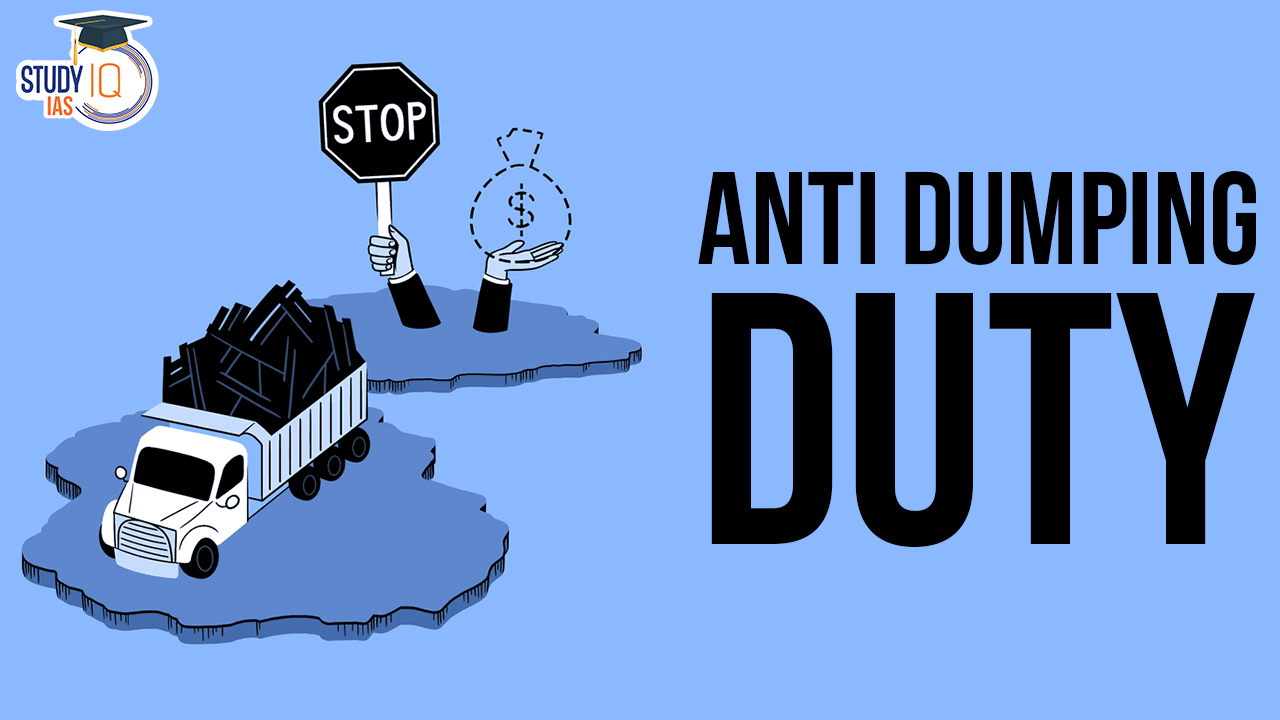Table of Contents
Context: India imposed a 30% Anti-Dumping Duty (ADD) on bare printed circuit boards (BPCBs) to protect domestic PCB manufacturers.
What is Anti Dumping Duty (ADD)?
- Anti dumping duty is a protectionist tariff imposed by a country on foreign imports that are priced below fair market value.
- It prevents unfair trade practices and protects domestic industries from economic harm caused by cheaper imported goods.
- WTO Permitted: Anti-dumping measures are allowed under WTO regulations to ensure fair competition.
- Most Favored Nation (MFN) Status: It is a trade principle under WTO agreements requiring countries to offer equal trade terms to all WTO members.
- India grants MFN status to China, but can still impose anti-dumping duties under WTO rules.
Goals of Anti Dumping Duty
- The primary goal of anti-dumping duty is to safeguard local industries and markets from the adverse effects of such dumping, promoting fair trade practices.
- While anti-dumping duties aim to protect domestic industries, they may inadvertently result in increased prices for consumers within the country.
- This measure seeks to adjust the market distortions caused by dumping and to restore equitable trading conditions.
- While they protect local businesses, ADDs can result in higher prices for domestic consumers and may reduce international competition for domestic producers.
Anti Dumping Duty Administration in India
- In India, anti-dumping measures are implemented by the Directorate General of Trade Remedies (DGTR) under the Ministry of Commerce & Industry. The Department of Commerce recommends the duty, and the Ministry of Finance levies it.
What is Dumping?
- Dumping occurs when a foreign company exports a product at a price lower than its domestic market price or production cost.
- Essentially, it involves selling goods abroad at a significantly reduced cost compared to what they are sold for domestically.
- Dumping can provide advantages in terms of market penetration, but it remains a contentious practice in international trade due to its potential impact on fair competition and domestic industries.
- Legality: Dumping is legal under WTO rules unless the foreign country can reliably show the negative effects the exporting firm has caused its domestic producers.
- To protect their domestic industries from predatory pricing, most nations use tariffs and quotas to counter dumping.
|
Important Terms |
Countervailing Duty (CVD)
Customs Duty
|
WTO and Anti Dumping Duty
- The World Trade Organization (WTO) sanctions the use of anti-dumping duties as a means of maintaining fair competition among nations.
- The WTO permits affected countries to initiate legal proceedings against dumping countries if there’s concrete evidence of significant harm or potential harm to the domestic industry.
- To impose such duties, the affected government must demonstrate the occurrence of dumping, quantify the dumping margin, and establish the actual or potential harm to the domestic sector.
| Important Facts |
Trade between India and China Between FY19 and FY24, India’s imports from China rose from $70 billion to $101 billion, while exports remained steady at $16 billion. |
About Directorate General of Trade Remedies (DGTR)
- Formed in: 1997
- Earlier known as DGAD (Directorate General of Anti-Dumping & Allied Duties), underwent a name change in May 2018.
- Body: It is a quasi-judicial body.
- Nodal Ministry: It operates under the Ministry of Commerce and Industry.
- Purpose: DGTR was established to consolidate efforts into a unified national body responsible for addressing various Trade Remedial actions, including anti-dumping, countervailing, and safeguard measures.
- Function: To ensure fair competition within the domestic market by protecting it against unfair trade practices such as dumping, subsidisation, and sudden increases in imports.
Countervailing Vs. Anti-Dumping Duty
| Aspect | Countervailing Duty | Anti-Dumping Duty |
| Definition | Tariffs imposed to offset the effects of foreign government subsidies on imported goods. | Tariffs imposed to prevent unfair pricing practices where foreign exporters sell goods below fair value. |
| Purpose | To neutralise the financial benefits that foreign manufacturers receive from subsidies. | To protect domestic industries from being harmed by unfairly low-priced imports. |


 Municipal Bonds in India: Meaning, Featu...
Municipal Bonds in India: Meaning, Featu...
 Cyclone Montha 2025: Severe Storm Batter...
Cyclone Montha 2025: Severe Storm Batter...
 Kafala System: Meaning, History, Issues,...
Kafala System: Meaning, History, Issues,...




















